Amplifier equipment Wi-Fi network
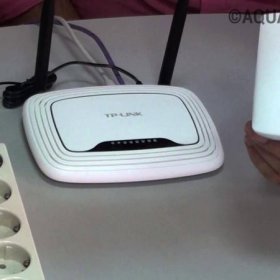
Today, it is much easier to make Wi-Fi signal amplification and much cheaper than a few years ago. Everyone can do a similar procedure, and without the availability of specialized knowledge and practical skills in electrical engineering. In this article, we will talk about the types of Wi-Fi signal amplifiers, the criteria for selecting these devices, and also consider the process of manufacturing an amplifier at home.
Content
Types of Wi-Fi Amplifiers
The Wi-Fi amplifier is an electrical device designed to amplify a signal transmitted over wireless Internet networks. All Wi-Fi signal amplifiers can be divided into two categories: active and passive.
Active Wi-Fi Amplifiers
Active amplification equipment includes repeaters (repeaters) and access points. They differ from passive ones in the first place in that they amplify the signal in all directions and are connected to an electrical outlet.
Repeaters (repeaters)
A Wi-Fi repeater is a relay type device designed to amplify a Wi-Fi signal. This device receives the signal coming from the head (main) router, and transmits it further, increasing the network coverage area due to its own antennas.
As an example, consider the following option: suppose that a Wi-Fi router is installed in the entrance hall of the apartment. A good wireless signal is only found in one of the rooms, in the kitchen and in the hallway itself, while in other rooms there is a connection, but of extremely poor quality. In order to fix this situation, you should install and connect a repeater, and it is desirable to place it closer to the problem area. After connecting, it will receive data from the main router and relay it, thus ensuring a stable connection throughout the apartment.
When choosing repeaters, you should pay attention to their main characteristics, which include:
- Wi-Fi network speed;
- frequency range (frequencies at which the repeater receives / transmits wireless signals);
- number of built-in antennas (the degree of expansion of the Wi-Fi signal reception zone will depend on this);
- availability of required ports.
It should be remembered that repeaters are mainly used to enhance Wi-Fi in residential premises (houses or apartments). In order to expand the Wi-Fi zone and amplify the signal in production or public places, more powerful amplification equipment is used, namely access points.
Wi-Fi Access Points
A wireless access point (AP) is the main element of any Wi-Fi network and acts as a base station (transmitter) transmitting a Wi-Fi signal, but if necessary, it can be connected to an existing network in repeater mode (repeater or WDS).
Above, we examined the types of active amplification equipment, but Wi-Fi networks are often equipped with passive devices - antennas.
Passive Amplification Equipment
Passive amplification equipment includes various antennas used to receive / transmit Wi-Fi signals over networks.
How Wi-Fi Antennas Work
The operation of Wi-Fi antennas is almost identical to the operation of devices that ordinary home radios are equipped with. The only difference is that the router antenna is capable of both receiving and transmitting a signal. High-frequency currents are induced in it, and the quality of this process is affected by the design of the device and the material that served to manufacture it.
Wi-Fi Antenna Classification
The entire antenna complex of Wi-Fi networks according to certain criteria is divided into several groups.
At the location, the following modifications of Wi-Fi antennas can be distinguished:
- outdoor, used outdoors. They are used to expand the signal coverage (reception) zone in open-type territories (parks, squares, streets, etc.);
- internal, used for uniform distribution of Wi-Fi signal inside buildings (in shopping malls, indoor amusement parks, etc.) and premises (offices, warehouses).
Table: advantages and disadvantages of different types of Wi-Fi antennas
| Antenna Type | Benefits | disadvantages |
| Domestic |
|
|
| Outdoor |
|
|
By the method of signal distribution, Wi-Fi antennas are divided into:
- omnidirectional. Omni-directional (isotropic) antennas can be mounted both in the house (apartment) and on the street. They have a small gain and uniform signal emission, which determines the characteristics of the antennas. In a graphical form, these characteristics are represented by radiation patterns;
- directed. Such antennas have a rather high gain that affects the increase in the bandwidth of the received or transmitted signal, and this parameter does not depend on where the antenna is installed. Based on the radiation patterns of antennas of this type, it is possible to organize wireless Wi-Fi networks with a high quality of the transmitted signal with the possibility of increasing the distance from the transmitter to the reception zone. Emitting a signal in a certain direction prevents attempts by unregistered users to use it.
According to the design features of the W-Fi antenna, there are:
- pin - create omnidirectional signal propagation and are used as an amplifier of the reception zone from the access point located in the building. Usually have a height of up to 150 cm;
- flat - designed to relay the signal received from one access point to another access point and can cover a distance of several kilometers. They are used for external installation and are installed on special supports or walls. Structurally made in the form of plates most often square in shape with a thickness of at least 10 mm and sides of about 300 mm;
- panel - are desktop devices with directional action. This type of antenna, unlike external, is equipped with a function for adjusting the angle of inclination relative to the base, which allows the beam to be focused most accurately.
Wi-Fi Antenna Features
The main parameters of a Wi-Fi antenna include:
- frequency range in which the device operates;
- a gain showing an increase in the power flux of a single directional antenna with respect to the signal density of an isotropic device operating uniformly in all directions;
- sizes that actually determine the gain and range.
Amplifier Setup
Above, we examined three types of amplification equipment that is part of a Wi-Fi network, namely: Wi-Fi repeaters and access points (active part) and antennas (passive part). However, the equipment will not work without proper configuration, so we suggest that you consider the process of setting up each of them.
Wi-Fi Repeater Setup
Consider, for example, the TP-Link TL-WA850RE repeater setup process. First, get acquainted with the appearance of the device and its elements.
On the front panel of the repeater there is a round color indicator that signals the current state of the system and its characteristics: Iii (incoming signal power), Ethernet (using the Ethernet port), Power (power), Wireless (network availability) and RE (expanding the coverage area) . The bottom panel is equipped with an Ethernet port and a Reset button, which allows you to reset the settings set by the user.
Before proceeding directly to the setup process, you must connect the repeater to the mains.
Types of settings
The selected repeater model, like many of its analogues, has three ways to configure:
- Automatic configuration (the repeater independently determines the available network and connects to it).
- Using a smartphone or other portable device that is connected via Wi-Fi.
- Using a computer that can be connected to an Ethernet port using patch cord.
Consider a detailed first two of them.
Auto Setup (using WPS)
The repeater is equipped with the ability to automatically recognize the signal of the current network and determine all the necessary settings. In order to use this function, you must perform the following actions:
- We take the available access point or router and click on the WPS button.
- Click on the control button, which is located on the front panel of the repeater, and wait a few minutes. After that, the network is discovered, and you can use the entire coverage area of both devices.
Setting up using a smartphone or tablet connected via Wi-Fi
In order to initialize the repeater settings using a tablet or smartphone, you should:
- Press the repeater control button when Wi-Fi is turned on on the wireless device.
- Find the connection with the name "TP-LINK_Extender_7320 ba" in the list of available networks.
- Connect to this network.To do this, click on the line with its name.
- In the pop-up window that appears, enter your username and password. First you need to try to enter the combination admin / admin (standard pair). If you can’t log in, see the username and password in the instructions for the device or on the sticker (nameplate) on the device.
Video: how to expand the WIFI zone | TP-LINK TL-WA850RE review and setup
TP-Link TL-WA850RE Repeater Owner Reviews
Great repeater! It works great! We have an apartment with the letter “G” - reinforced concrete casting everywhere. There was no signal in the back room. Now the repeater takes through the concrete wall and sends through the concrete wall to EXCELLENT. The setting is elementary. Happy as a boa constrictor.
For my money, a great repeater. Before updating the firmware, client devices lost wi-fi when moving between zones of the access point and repeater. After updating the firmware, reconnecting occurs automatically and very quickly. I recommend to buy.
Configure Wi-Fi hotspot
As mentioned above, a Wi-Fi access point can act not only as a base station, but also as an additional amplifier (repeater). Let's take a look at the process of setting it up.
Configuring an access point in repeater mode
As an example, take the TL-WA 701 ND access point (version 2).
First, write down the data of the main router, they will be needed for further configuration:
- Network IP Address: 192.168.0.1;
- SSID: test ABC;
- Encryption Type: WPA 2-PSK;
- Password: 11667063.
In order to configure the access point in repeater mode, you must perform the following steps:
- We connect the personal computer to the access point using an Ethernet network cable. Then open the Internet browser and enter its IP address (by default - 192.168.0.254) in the address bar section and press Enter.
- Enter username and password. By default, this is the admin / admin pair.
- We get to the quick installation page of the TP-Link device. Click “Next” to start the installation procedure.
- Select the mode of operation “Repeater (Signal Amplifier)” (Repeater Mode).
- Select "Universal Repeater" (Universal Repeater). Next, click "Search" (Survey). If the root router (Root Router) supports your WDS address, you can also select the WDS Repeater.
- We find the SSID of the main router, which we wrote out earlier, and click "Connect".
- We confirm the method of protecting the wireless connection (Wireless security mode) and enter the password of the wireless network (Wireless Password) of the router (written out by us earlier) and click “Next” (Next).
- Make sure that the DHCP server is turned on and click “Next”.
- We reboot the system (Reboot).
DIY Wi-Fi signal amplifiers
Today, the market for amplification equipment for Wi-Fi networks is very vast, but why spend money if the device can be assembled at home, paying less money, or maybe without spending anything?
Homemade rhombic antenna
In order to make such an amplification antenna, you need to take a coaxial cable, a small aluminum sheet, a plastic lunch box, a wire and a soldering iron.
- From the existing wire we make two diamonds, each side of which should be 31 mm, and one of the corners of each diamond should be soldered.
- After the rhombuses are ready, solder their upper ends together so that a triangle is turned upside down.
- We solder a small piece of wire 5 mm long on both lower ends.
- We attach the copper core of the coaxial cable to the upper soldering point, and the metal braid to the lower one. It should be remembered that bad weather and precipitation can greatly affect the performance of the antenna, so we put the device in a sealed plastic lunch box.
To enhance the signal power and its directional properties, an additional reflective foil screen can be made.
Video: how to strengthen 3G, 4G, Wi-Fi routers
Amplifier antenna Wi-Fi signal type "wave channel"
This is also a fairly simple antenna to manufacture. To create it you need:
- foam or cardboard backing;
- copper wire;
- side cutters;
- a pen;
- ruler;
- scissors.
- From the foam cut out the nozzle 15 cm long with a slight thickening for mounting on the antenna of the router.
- We insert wire pins-dipoles 5 cm long.
- Install the nozzle on the antenna of the router. If the router has several antennas, you need to make the appropriate number of nozzles.
Video: DIY amplifier
Wi-Fi networks are quite extensive and complex structures consisting of transmitting, receiving and amplifying equipment. The latter group is widely distributed in the market, but the cost of a decent amplifier is very high. Because of this, radio amateurs have developed many schemes of such devices for self-assembly, from repeaters to amplifying antennas, which anyone can easily make even without special skills.
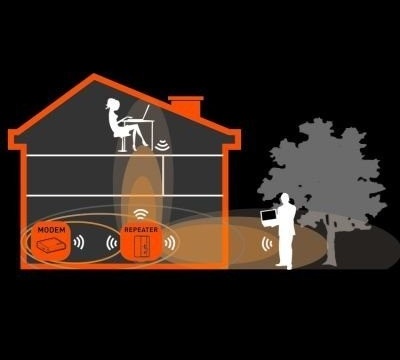
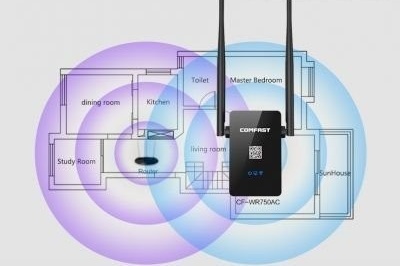
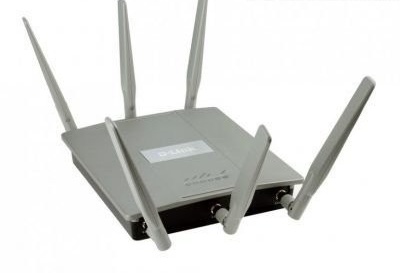
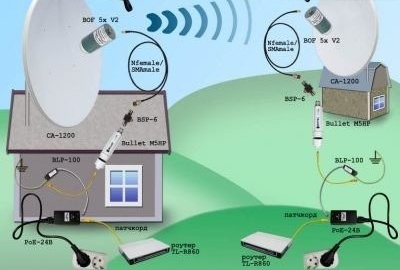
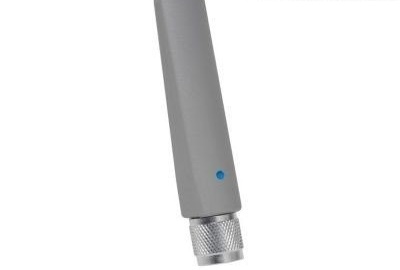
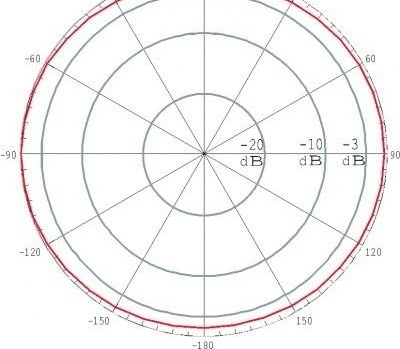
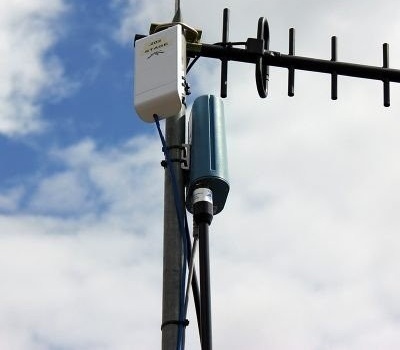
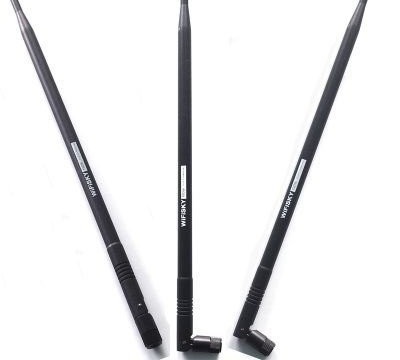
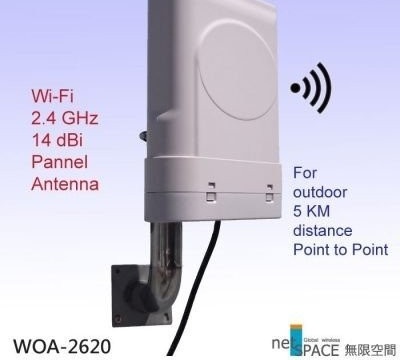
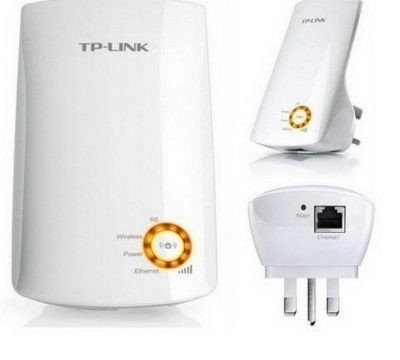
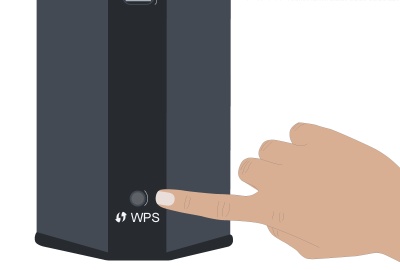
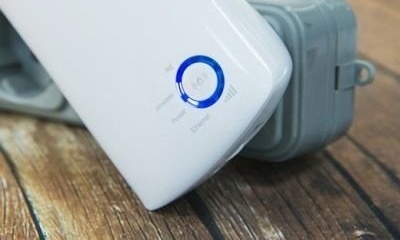
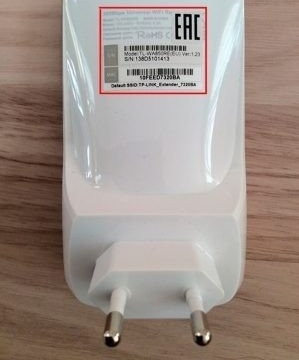
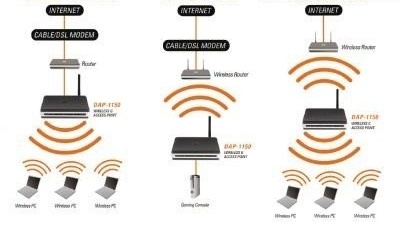
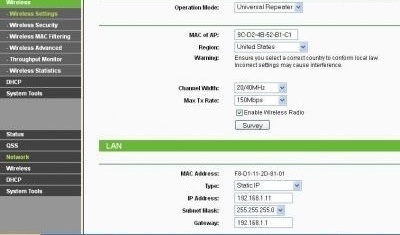
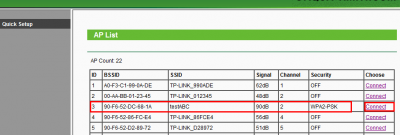
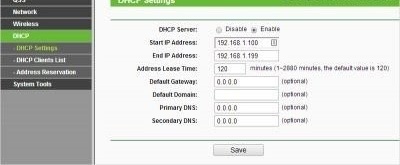
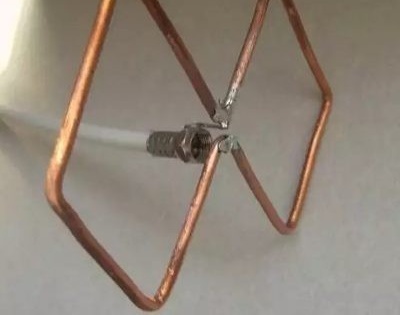
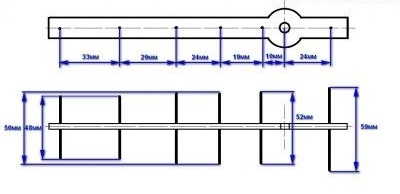

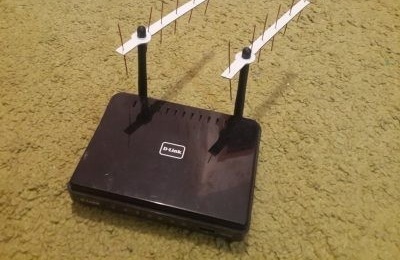
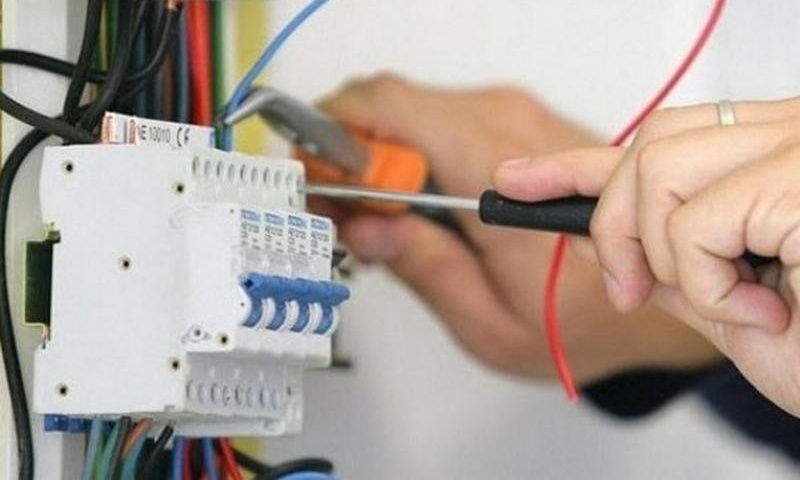


1 comment